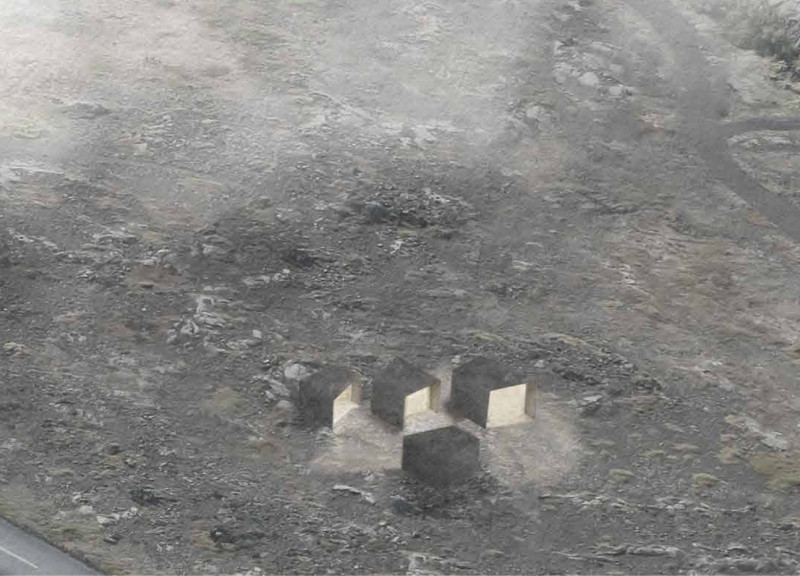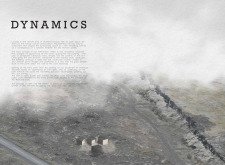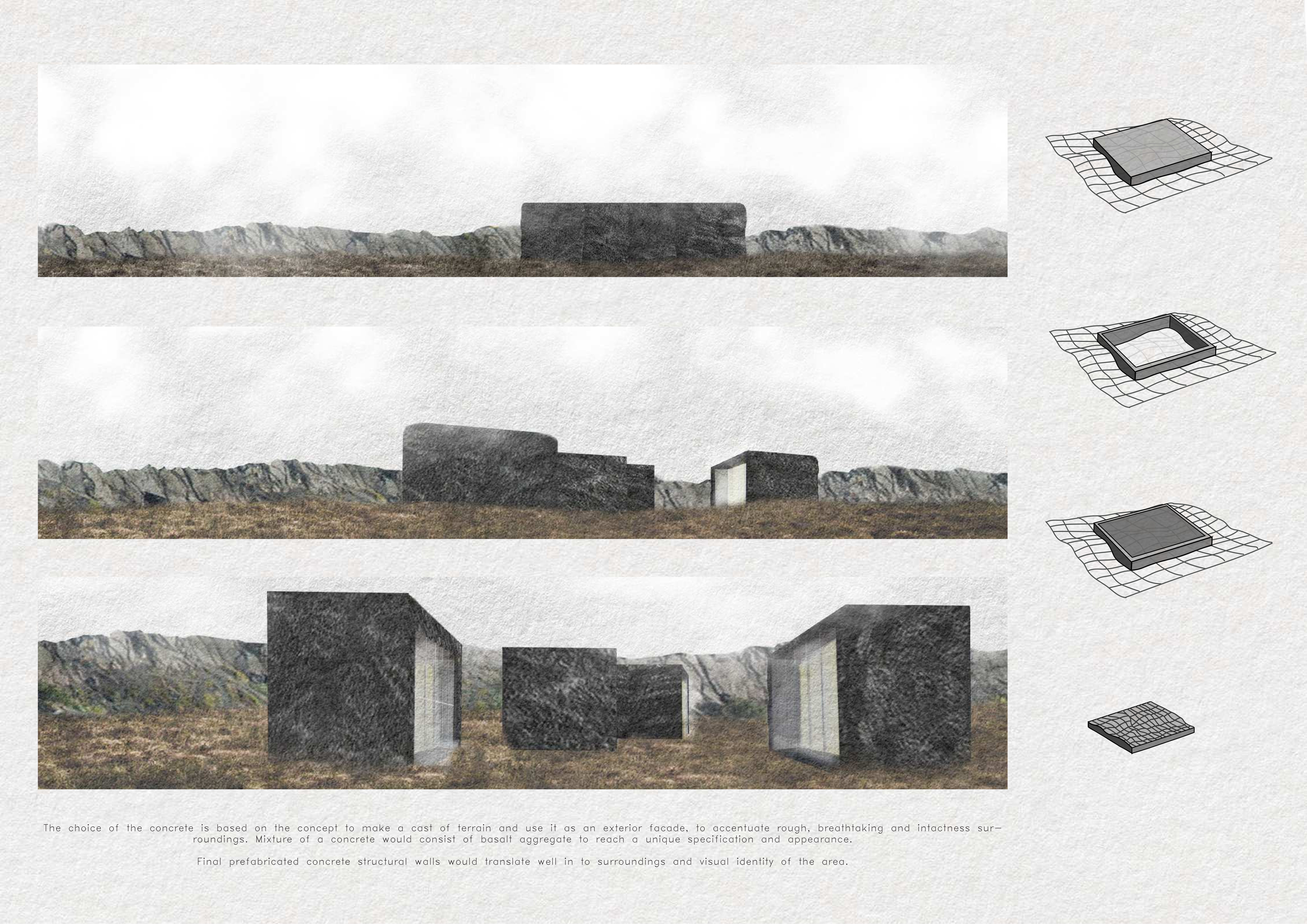5 key facts about this project
Located in the remote region of Northern Iceland, the project engages with its unique geographical setting, shaped by the interaction of two tectonic plates. The design concept centers around a monolithic form that changes appearance as visitors approach, creating a spatial experience that is both reflective of the landscape and a functional space for exploration and interaction.
Site Response
The structure stands out against the natural phenomena nearby, utilizing perspective, distance, and volume distribution to interact with the environment. While it seems like one cohesive mass, the design consists of four distinct segments. Each segment is carefully positioned to provide views toward the nearby cave entrances. This fragmentation encourages visitors to engage with the landscape and explore the site, enhancing their experience of nature.
Circulation and Experience
The pathway leading to the building connects various facilities under one unified form. As visitors walk towards the caves, the structure begins to reveal its separate components, allowing the cave entrances to become visible. The path to the Mans cave is designed to be more openly accessible, while the approach to the Woman's cave is more intimate and secluded. This variety in access enhances the overall user experience by presenting different levels of openness and privacy.
Light and Materiality
Light plays a vital role in the experience within the structure. Glazing is strategically placed in the cut aspects of the building to allow natural light to enter the spaces, creating a dynamic relationship between light and shadow. Concrete is the primary material used, chosen for its capacity to reflect the surrounding terrain. The inclusion of basalt aggregate in the concrete enhances the connection to the rugged geological characteristics of Northern Iceland.
The thoughtful design elements combine to create a setting that merges architecture with nature, encouraging visitors to appreciate the geological features of the area. The interplay between the building and its natural surroundings promotes a deeper understanding of the landscape and offers a rich spatial experience.





















































